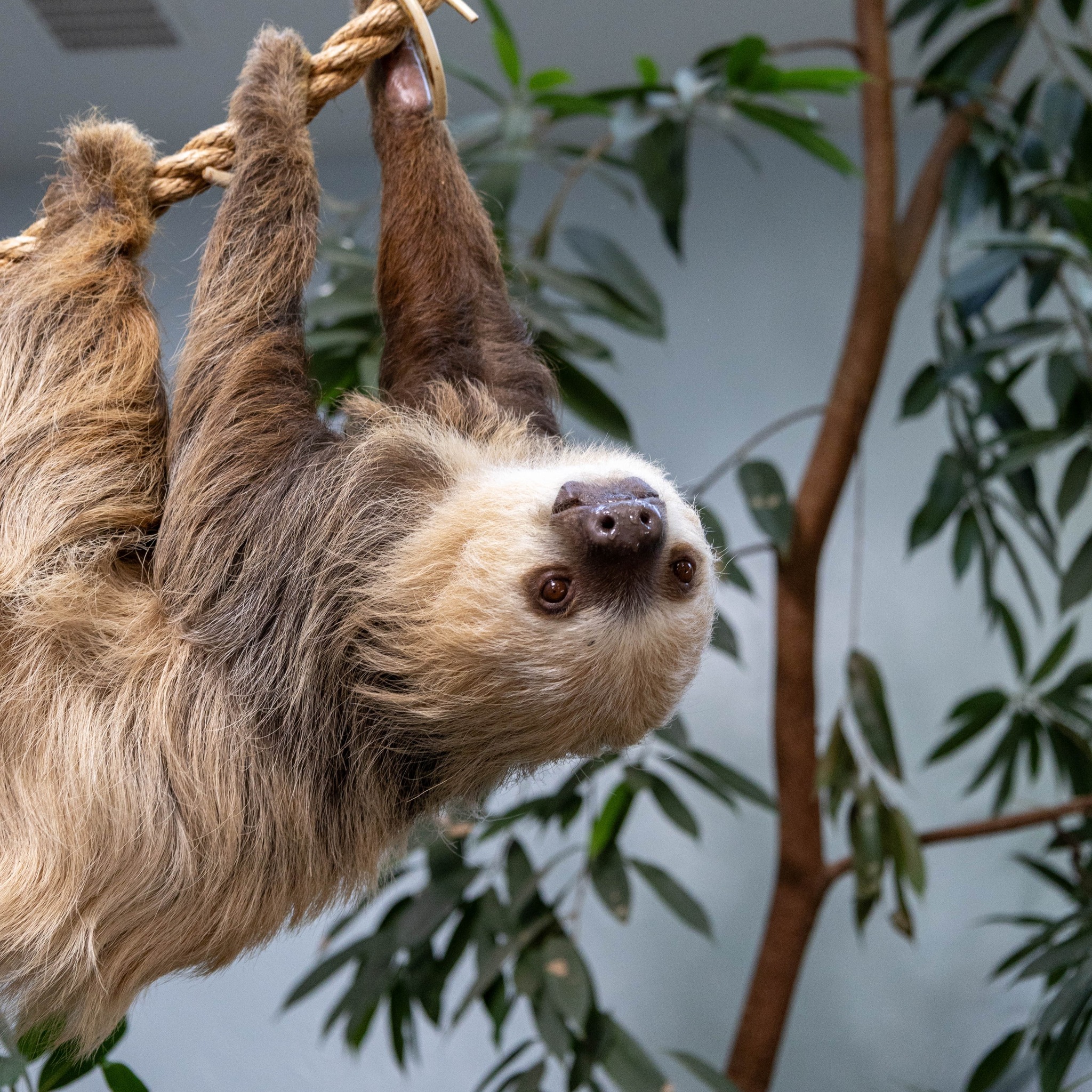- Characteristics and Unique Traits of Hoffmann’s Two-Toed Sloths
- Life Expectancy and Health Statistics in Zoo Environments
- The Role of Enrichment and Training Sessions in Zoo Management
- Conservation Efforts and the Importance of Coexistence
- Observing Bosco’s Family: Aysan and Olive in a Zoo Setting
Characteristics and Unique Traits of Hoffmann’s Two-Toed Sloths
Hoffmann’s two-toed sloths, native to Central and South America, exhibit distinct characteristics that set them apart from other wildlife. These creatures are renowned for their slow movement, a trait that has fascinated both the scientific community and the public. Their sluggishness is not just a biological feature but also an adaptation that aids in energy conservation, vital for survival on a diet primarily composed of leaves. Their slow metabolism allows them to conserve energy while digesting complex plant materials over several days.
Bosco, a notable member of his species, embodies the gentle nature typical of these sloths. His button nose and gentle eyes make him an ambassador of slowness, inviting zoo visitors to pause and appreciate the moment. Sloths possess a specialized suspensory system, allowing them to hang effortlessly from trees, utilizing minimal energy. This adaptation is crucial in their natural habitat, where evasion and camouflage are key to avoiding predators.
Life Expectancy and Health Statistics in Zoo Environments
In their natural habitats, Hoffmann’s two-toed sloths have life spans that are frequently curtailed by environmental threats. However, in a controlled zoo environment, they often enjoy extended life expectancy, benefitting from advanced care and protection. The Association of Zoos and Aquariums (AZA) states that sloths like Bosco typically have a median life expectancy of 15 years while living under human care. Yet, Bosco has defied odds, reaching the impressive age of 33, more than doubling the average.
Bosco’s remarkable longevity speaks volumes about the quality of care provided in modern zoos, where attention to diet, health checkups, and enrichment activities contribute positively to an animal’s life span. Regular veterinary care is critical, focusing on ensuring animals remain healthy well into old age. In Bosco’s case, these practices are evident in his continued participation in enrichment activities designed to keep him mentally and physically engaged.
The Role of Enrichment and Training Sessions in Zoo Management
Enrichment is a cornerstone of contemporary zoo management. It serves a dual purpose; enhancing the welfare of zoo residents and boosting visitor engagement by showcasing natural behaviors. Enrichment includes a variety of techniques designed to stimulate the animals physically and mentally, ranging from hiding food to encourage natural foraging behaviors, to introducing toys and puzzles that promote problem-solving.
Bosco actively participates in these enrichment and training sessions, highlighting his cognitive capabilities and adaptability. These sessions are vital not only for physical health but for mental well-being, reducing boredom and reinforcing natural behaviors. By doing so, zoological parks such as Bosco’s ensure high standards of animal welfare and contribute to the educational experience of visitors.
Conservation Efforts and the Importance of Coexistence
Conservation is an imperative focus in modern zoology and wildlife care. Sloths like Bosco play a pivotal role in education and raising awareness about the challenges faced by their species in the wild. Deforestation and habitat fragmentation are significant threats leading to population declines, and observing animals like Bosco can inspire action towards forest conservation.
Zoos contribute to these conservation efforts by offering safe havens for species at risk, as well as participating in breeding programs that aim to bolster populations. Through education and engagement initiatives, they promote a message of coexistence with nature. The presence of Bosco in a zoo not only aids in his species’ conservation but exemplifies the interconnectedness of conservation, education, and community action.
Observing Bosco’s Family: Aysan and Olive in a Zoo Setting
Visitors to the zoo have the unique opportunity to see Bosco not in isolation but as part of a family unit with Aysan and their offspring, Olive. Observing these family dynamics offers insight into the social structures and behaviors of sloths. In a safe, enriching environment, animals can exhibit behaviors that offer educational experiences to observers, enhancing understanding of their natural lifestyles.
Aysan and Olive share a comfortable habitat with Bosco, providing visitors an opportunity to witness sloth interactions in a controlled setting. This cohabitation offers valuable learning experiences and underscores the zoo’s commitment to holistic care that encompasses both individual and social welfare. Bosco’s family interactions are a testament to successful zoo management practices that emphasize the importance of social and environmental enrichment.
By highlighting Bosco’s life and the broader aspects of two-toed sloth care, this article underscores the harmony between conservation, education, and active management in zoos. The longevity of Bosco and the thriving environment of his family illustrate the potential for zoos to act as beacons of wildlife preservation and education.
*****
Source Description
Help us wish a very happy 33rd birthday to Bosco! His button nose, gentle eyes and signature slothy smirk have a way of helping guests slow down and savor the moment.
Hoffmann’s two-toed sloths, like Bosco, have a median life expectancy of 15 years in human care, according to the AZA. Although he’s doubled his life expectancy, Bosco seems to be in great health and engages in training and enrichment sessions with keepers. Swing by Scutes Family Gallery to visit Bosco, Aysan and their sweet baby, Olive, in their cozy atrium co-habitat.


